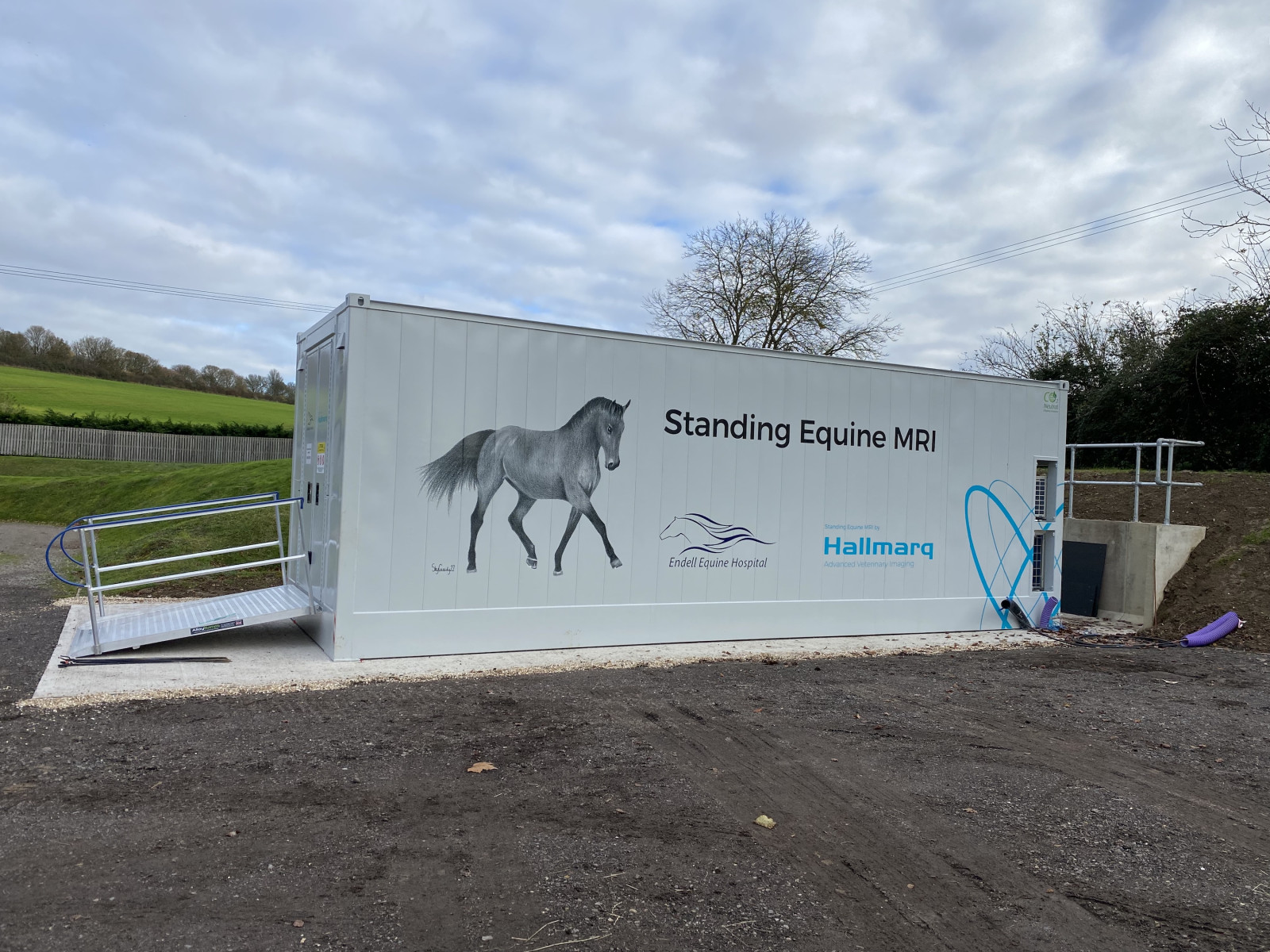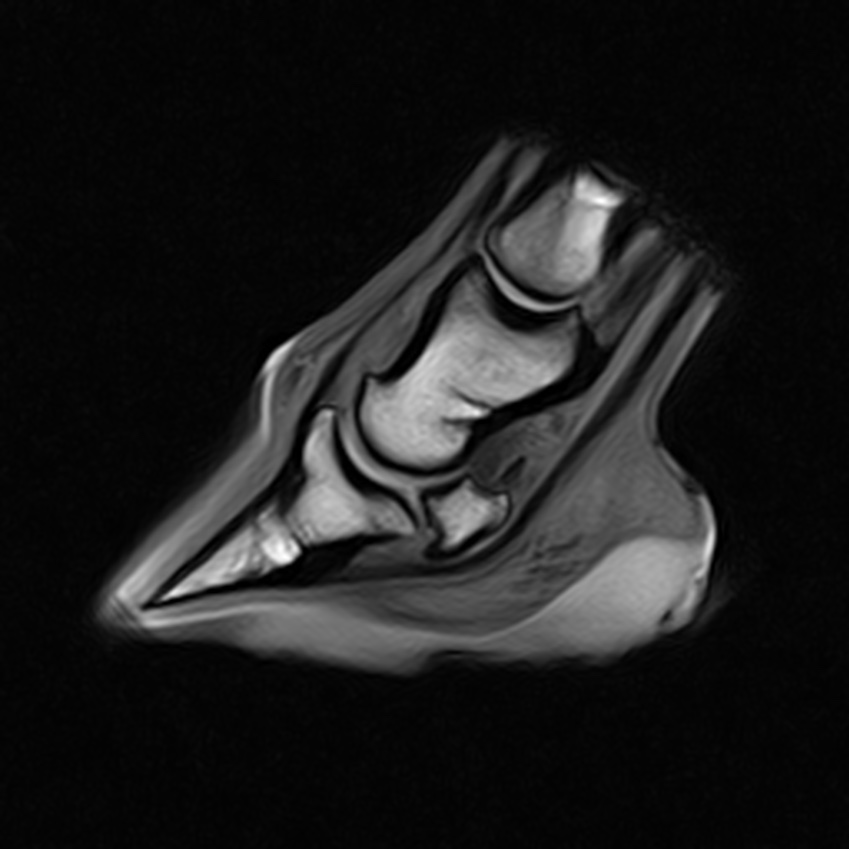In December 2022, Endell Equine Hospital received the newest Hallmarq standing equine MRI in the world. The MRI expands our diagnostic capabilities for our clients and for our referring veterinarians (and thus referred clients).
MRI has numerous benefits in diagnosing potential causes of lameness and is considered the gold standard in soft tissue imaging in horses (as well as humans). The most common area to be scanned is the foot, where there is a lot of complicated, intricate anatomy, which can’t be seen by x-rays. Our standing MRI has the huge benefit that the scans can be acquired with just standing sedation, so the horses can just walk in and out of the machine, not requiring general anaesthesia.
As well as its usual exceptional soft tissue imaging, MRI is capable of seeing certain lesions that are not visible on any other imaging modality such as “bone oedema” (increased fluid inside the bone). It is also able to see nail tracts in sole punctures even after the nail has been removed. MRI can also see (predict) certain racehorse fractures before they even occur
Useful information:
This is some information to help you understand the MRI procedure and what to expect on the day of your horse’s MRI at Endell Equine Hospital.
-
Horses should be dropped off as close as possible to 8.30am on the day of the scan, to let the horse settle in and be as calm as possible prior to the scan. Also, horses require nail (fragment) check radiogrpahs prior to scanning. If it is not possible to drop your horse off by 8.30am, the horse should be dropped off the night before, which will incur a livery charge.
-
Horses that are shod MUST have their shoes removed - an additional charge may be incurred if they are removed at the hospital.
-
If the front limbs are being scanned, both front shoes must be removed, the hind shoes do not need to be removed
-
If the hind limbs are being scanned, both hind shoes must be removed, the front shoes do not need to be removed
-
This is because the horse's shoes will stick to the magnet, which can be close to impossible to remove
-
Metal also causes an image artefact on MRI, which displays as a signal void - i.e. a large black hole on the image where we cannot see any anatomy
-
-
The maximum foot size that is possible to scan is a hoof that is less than 16.5cm wide at its widest point. Any larger than this is not possible to scan with a standing MRI.
-
The MRI procedure carries no risk to your horse and is non-painful. However, some horses find the environment strange and don’t settle well. Your horse will be sedated for the procedure.
-
Sedation is administered via the jugular vein in the neck and a short-term intravenous catheter will be inserted for quick, easy venous access. It is usual for us to clip a small patch of hair on the neck, over the vein, for this catheter placement. Please notify us if you do not want us to clip your horse’s neck.
-
It is routine to scan both limbs even if your horse is only lame in one leg. This is to enable comparison and is included in the price of a standard scan. We may scan only one leg if your horse is coming in for a re-examination or if we are looking to make a specific diagnosis (e.g. if your horse has trodden on a nail).
-
One night of hospitalisation is included in the price of the MRI. Please expect the MRI to take at least 3 hours (standard time to scan one foot is 1 hour). It is necessary for the horse to stand still whilst we are scanning. If they move we have to start again which will make the scan take longer. Hospitalisation overnight after the scan is a requirement, both for monitoring your hourse after receiving often large quantities of sedation as well as if we are unhappy with the image quality, we can acquire additional scans the next day before the horse goes home.
-
It is not possible for you to be with your horse whilst they are being scanned but we are happy to show you the scanning room at another time if you’re interested.
-
If further lameness investigation/treatment is indicated from the MRI findings, then it may be necessary for your horse to stay longer. If you have been referred from another practice we will speak to your vet regarding further investigation before going ahead.
-
Evaluating MRI images fully takes some time so please do not expect to know the MRI findings for your horse before you leave. It is routine for us to communicate with your vet first and we will either discuss the findings with you directly, if your vet requests this, or will leave your vet to discuss these with you themselves. Wherever possible we endeavour to report the findings within 48hours following the MRI scan.
-
Most insurance companies pay for the cost of an MRI. However, it is strongly recommended to seek prior approval from the insurance company before proceeding.


